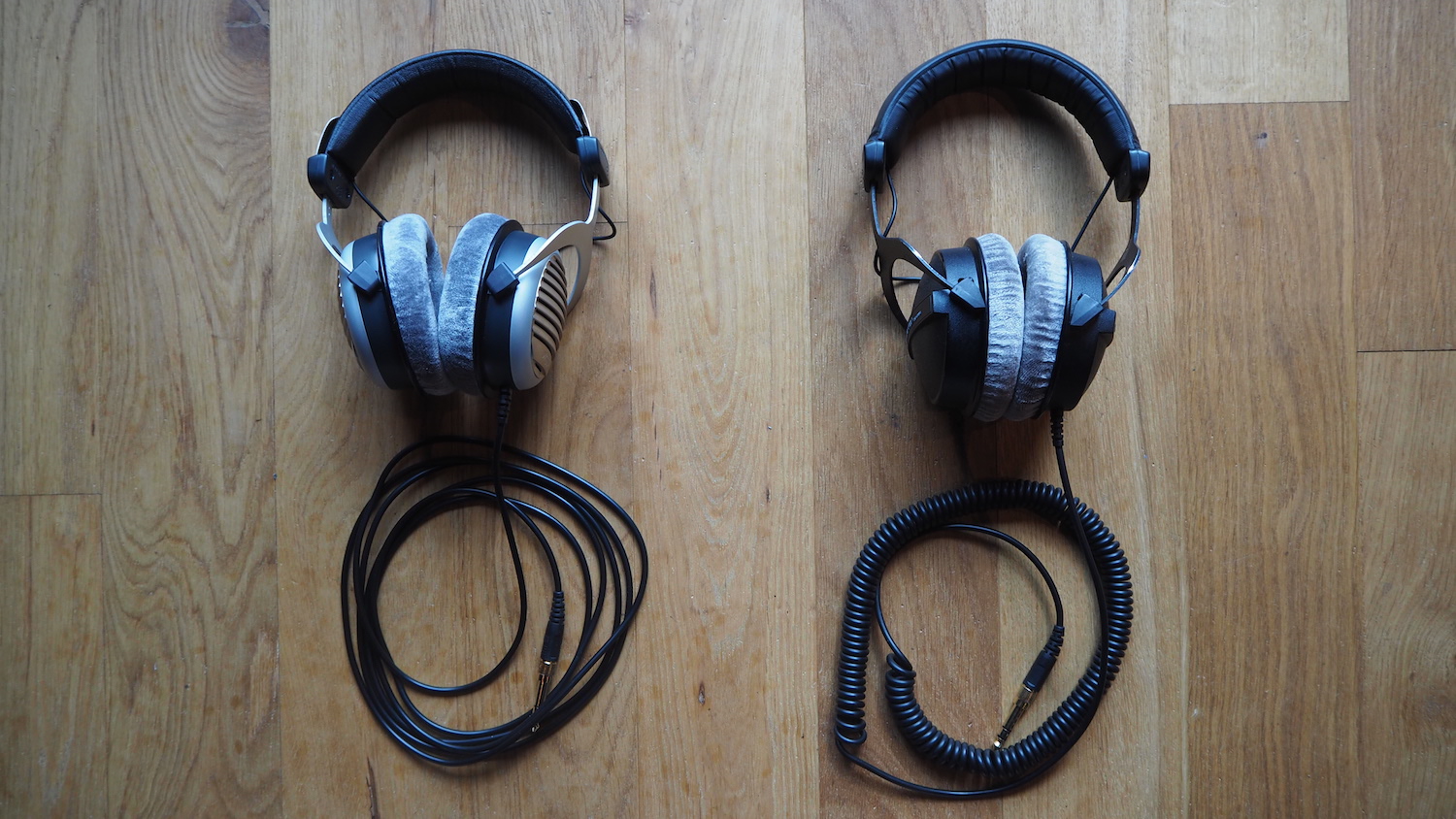
REVIEW: Akai MPD218 vs. PreSonus ATOM MIDI pad controllers
As a music producer, I’ve recently been inspired to make my own beats! I decided that I wanted to buy a cheap entry-level MIDI pad controller (or drum pad). So! I decided to compare the Akai MPD218 and newcomer PreSonus ATOM and see which one was better.
As a music producer, I’ve recently been inspired to make my own beats! And instead of drawing the beats with a mouse or finger drumming with midi keyboard (like this video of Just Dance), I decided that I wanted to buy a cheap entry-level MIDI pad controller (or drum pad). At first a friend let me borrow her Akai Professional LPD8, but with the 8 pads, I didn’t find it compatible with Ableton where the drum racks are usually 16 pads.
So! I decided to compare the Akai MPD218 and newcomer PreSonus ATOM and see which one was better.
BUY the PreSonus ATOM: https://redir.love/70nbQ7Gx
BUY the Akai Professional MPD218: https://redir.love/6aGgqRE2
Look: The MPD218 has a really sleek black look whereas the PreSonus ATOm looks less sleek with the white pads, but everything is arranged very neatly and the knobs are shaped very nicely. At first I would say the MPD218 wins in the looks comparison, but when you plug it in, you’ll see that the reason why the ATOM has white pads is because they are illuminated with a lot of different colours when it gets turned on and the MPD218 lights up with a red light only on the outer edge of each pad. For the ATOM, the different coloured lights change with different uses, so they have functional benefits. Therefore, on looks, I announce it a tie.
Build: The PreSonus ATOM is built more solidly and feels less cheap. The MPD218 feels a bit plasticky in a cheap way. ATOM wins.
Pad sensitivity: Now this is where it gets interesting for me. I was looking specifically for a pad controller that was very sensitive. When you do finger drumming, you need agile fingers, but you also need a device with pads that will trigger on the slightest and fastest touches. With the same pressure, the MPD218 triggers less notes than the ATOM. I was not too pleased with the MPD218 and I also thought the LPD8 could be improved too. I tried also Maschine Mikro MK3 and Ableton Push 2, and these are really the benchmark of fantastic sensitive pads. Even though the ATOM is not as good as Mikro or Push, for a cheap drum pad, it’s definitely a delight to play and much more sensitive than the MPD218. Since the MPD218 is less sensitive, I found that I needed to hit harder, which made it harder to play on time and get in a good flow. When you need to hit something with more force, then you lose the ability to be quick. It’s fine if you are generally a hard finger drummer, but I think for anyone who does quick note repeats, it’s more handy to have sensitive pads. ATOM wins.
See my YouTube video for comparing pad sensitivity:
In my YouTube review, you’ll see that not all pads are equally sensitive in both controllers. I think because they are both entry level controllers and are cheaply made, so some pads are super sensitive, while some consistently don’t trigger that well. I hope that with more use, that the controllers become more sensitive, like any instrument that takes time to warm up.
Pad feel: Both feel nice and the rubbery pads are fun to hit. It depends what you like, but the MPD218 pads are a little harder, chunky and are taller, which I personally don’t like. The ATOM has flatter buttons and have good grip. (note: Actually I really like the feel of the Ableton Push and for a cheap option the LPD8 which has very flat and soft rubbery pads similar to the Push). Tie.
Price: For the price war, the MPD218 wins hands down. the MPD218 is almost HALF the price of the ATOM, which makes this review even a bit unfair, because they are actually not really equal in price, but I think it’s because the ATOM comes with Studio One software with a lot of in-built sounds and this is definitely what makes the controller superior to MPD218. But in terms of price, MPD218 wins.
DAW compatibility: I tested both using Ableton, and both controllers worked beautifully with Ableton, in terms of being recognised in the system and all 16 pads being perfectly assigned with the drum racks, which was something I was looking for. I really like the Maschine Mikro but it didn’t automatically work with Ableton when you plug it in. You need to install a template and do all this fiddly stuff, so this in addition to the price was a reason for me not to get it. So in terms of DAW compatibility it is a tie.
Overall: I really wanted to like the MPD18 because of the price, but it just disappointed me. Functionality-wise it is fine, but for me the sensitivity and touch of a pad controller is what I’m really going to base my decision on, and I’ve chosen the PreSonus ATOM.

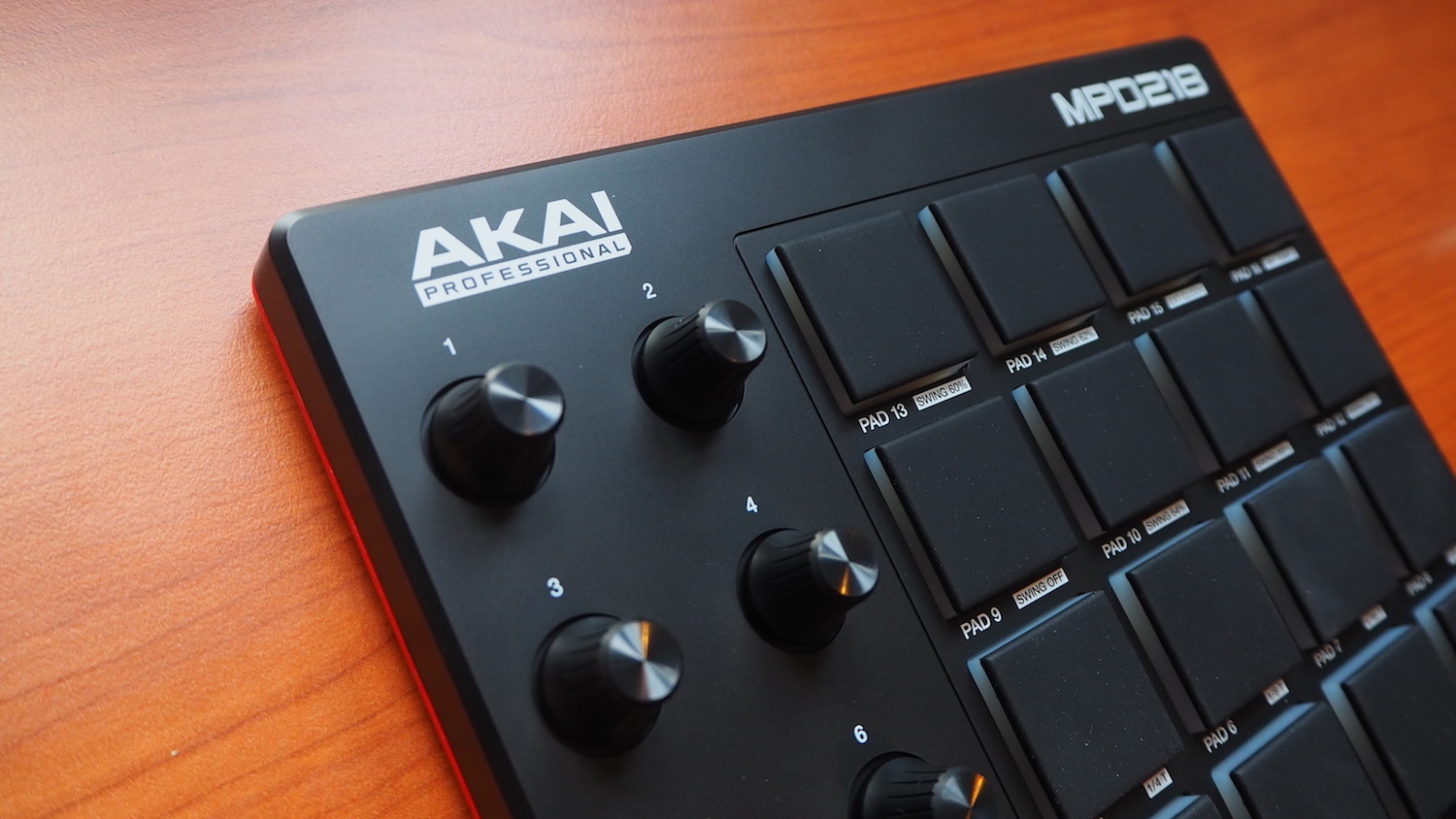

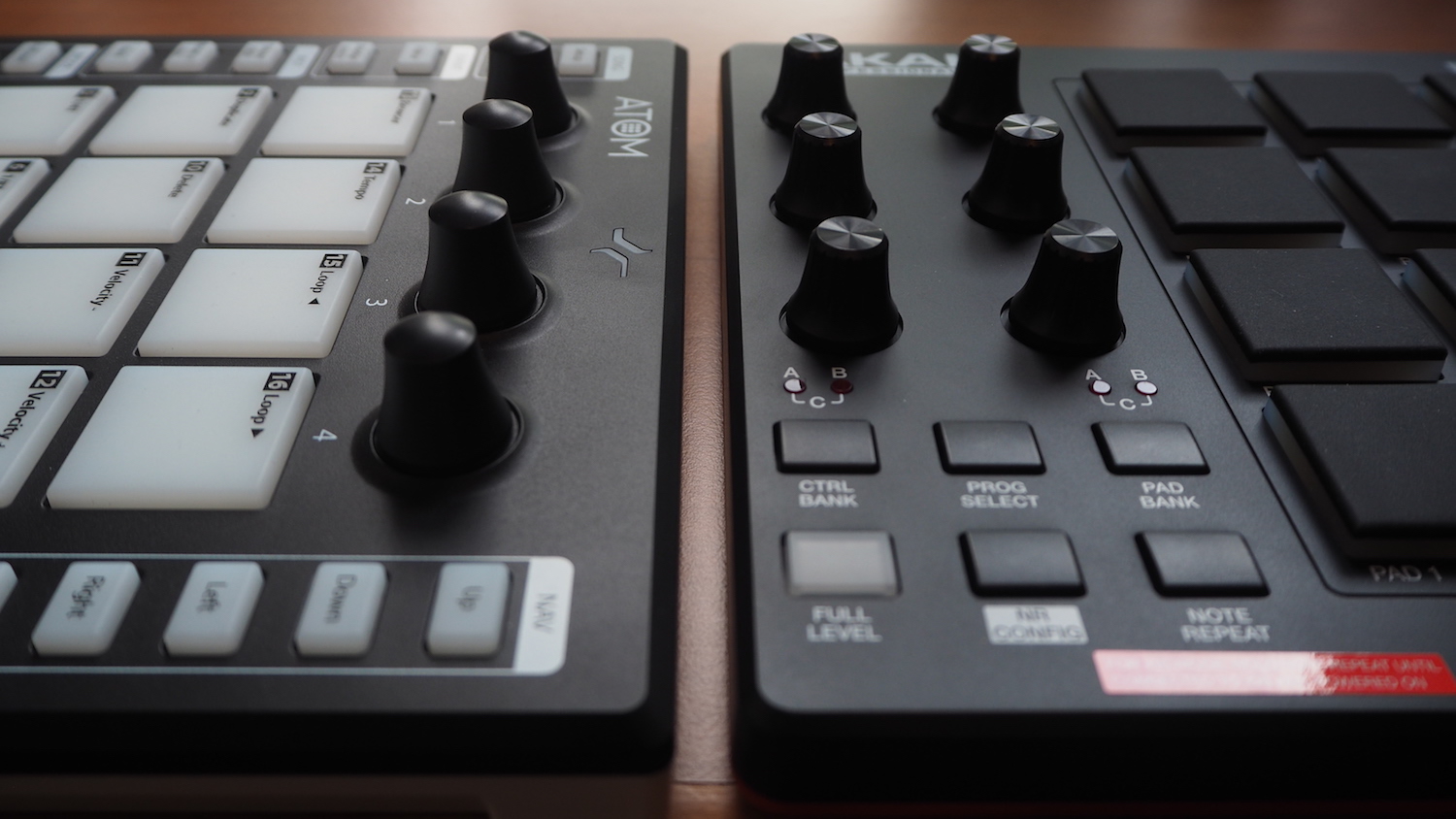
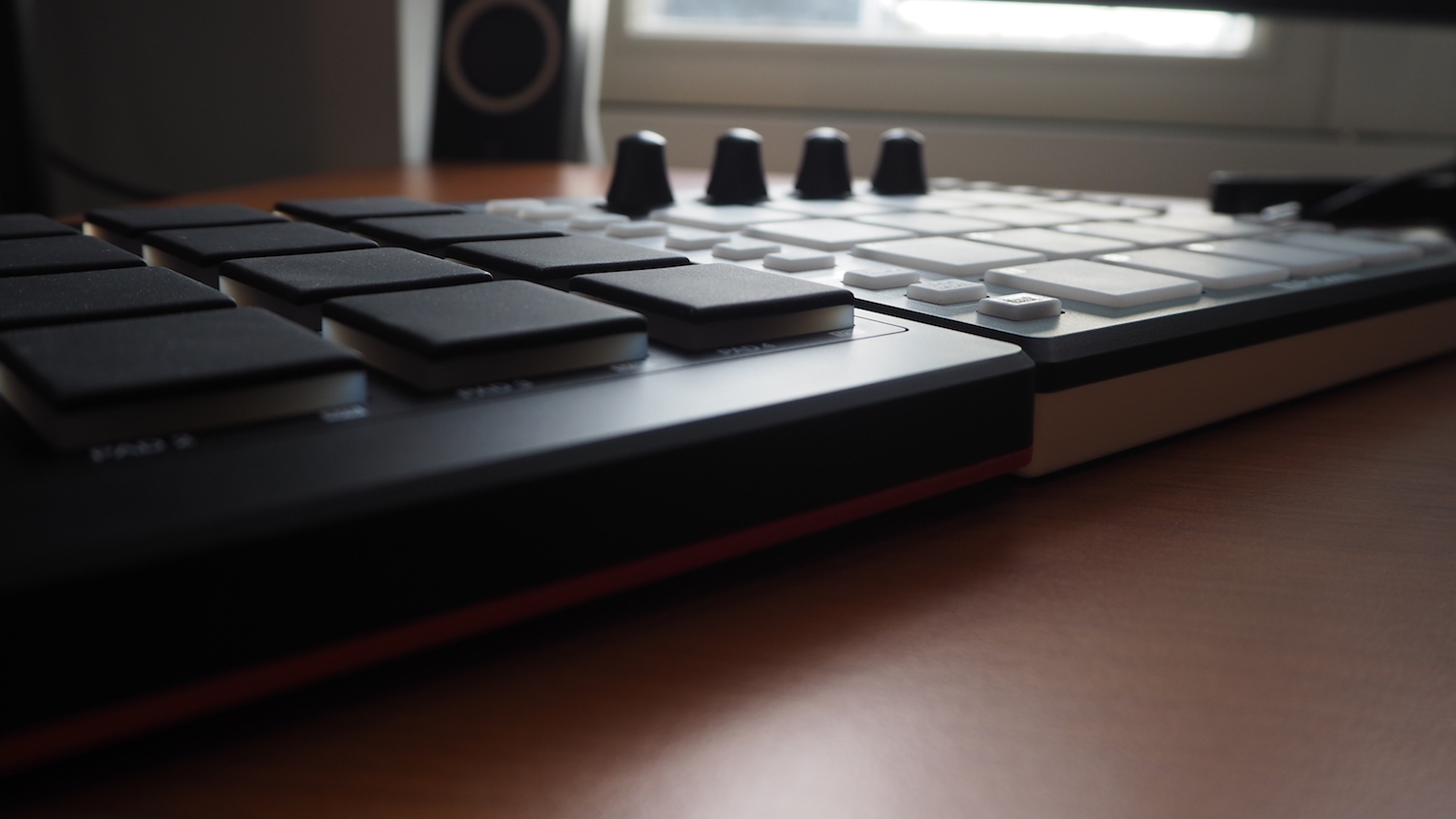

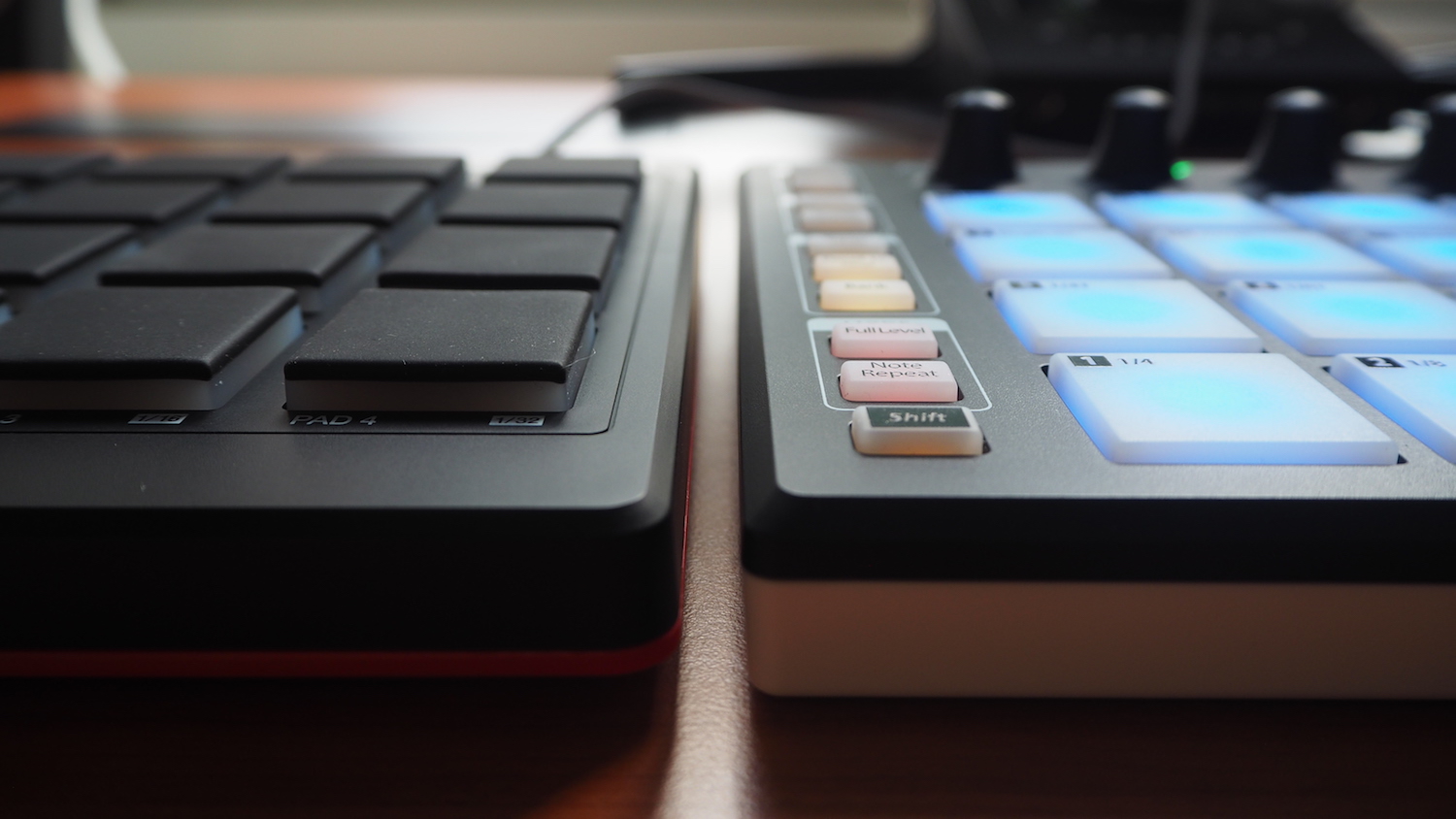
BUY the PreSonus ATOM: https://redir.love/70nbQ7Gx
BUY the Akai Professional MPD218: https://redir.love/6aGgqRE2
(note: I see two low scores for this product on Thomann, with no comments attached to the rating, which leads me to believe they are fake reviews, purposely to downgrade the peer-to-peer rating.)
—
If you’ve reached this far down of my blog post, please take a few seconds to:
Subscribe to my YouTube
Follow my Instagram
Like my Facebook
Where to buy an electric cello in Amsterdam
I recently received an email from a cellist who asked me for tips on places or stores in Amsterdam where she could try out some electric cellos, and brands that are on the not-too-expensive side that I could recommend.
I recently received an email from a cellist who asked me for tips on places or stores in Amsterdam where she could try out some electric cellos, and brands that are on the not-too-expensive side that I could recommend.
Hm, I thought. Great question regarding electric cellos. When I was looking to buy an electric cello, I discovered that unfortunately Amsterdam is not a good place to “try before you buy”. The music stores I know mostly stock guitars (Dirk Witte, Dijkman) or the big retailer Bax has a lot of guitar stuff and equipment for the studio like speakers, microphones, DJ gear and much more online, but no electric cellos.
So I struggled to find a store that had any electric cellos to try. There are no dedicated "string retailers" in Amsterdam. They mostly are ateliers who do repairs, and probably selling only classical cellos. Many years ago in Amsterdam I hired a Yamaha electric cello, but I'm afraid I don't remember which shop anymore.
The BEST recommendation I can give is to shop online at Thomann, which is a German online music retailer. They ship to The Netherlands. Unfortunately they do not have free returns, but their customer service is always very good! Here is a link of the electric cellos they have on offer: https://www.thomann.de/intl/thlpg_bhyy893m7x.html
Here are my top picks from their website:
MOST NATURAL SOUNDING - NS DESIGN CR SERIES -
https://thinkns.com/instrument/ns-design-electric-cello/
I have an electric cello from the brand NS Design, and I bought it from Thomann. NS Design has electric cellos ranging from 950 Euros to 3500 (from cheapest to best: WAV, NXTa and CR Series). Mine is the more expensive one (CR series). I like it because it sounds just like a classical cello and you can play standing up, which was my dream. I have a 5-string cello, and it’s also possible to buy a 6-string. If you'd like to try mine, please get in touch. (Read my review on the CR Series cello here)
MOST LIKE CLASSICAL CELLO - YAMAHA SILENT SERIES -
https://nl.yamaha.com/nl/products/musical_instruments/strings/silent_series/index.html
If you can afford something mid-price and prefer a brand well known, then go with a Yamaha cello, which range between 1600-2600 Euros. The cello shape mimics the shape of a real cello, so, it has the least barrier to entry. Many years ago, I tried a Yamaha electric cello (I think the SVC-110) and I didn't like the sound. it sounded very tinny and metallic. I haven’t tried the SVC-210, but since it is the best of the range and many famous cellists use it, I assume it sounds nicer. I preferred the sound of the NS Design cello much more than the SVC-110.
CHEAPEST
The cheapest one on the Thomann website is Harley Benton, but I don't know this brand.
MOST INTERESTING NEWCOMER - SBIP - https://sbip-instruments.com/sbip-cello
I saw a newcomer to the market: "sbip", which is around 1000 Euros, and I found someone in Amsterdam who has one of these cellos, so if you want to try his, then I can you can contact him: https://mrvanwalsh.com/. I contacted Stefan Beyer, the owner of sbip and he said that his cello comes with a magnetic pickup (not piezo like most others) and is supposed to be the electric guitar equivalent of the cello, therefore, you can expect a different sound and not trying to sound as close to the traditional classical cello.
In summary, I hope this helps, and I’m sorry that there is no “good” solution to trying an electric cello in Amsterdam. Let me know in the comments below if there is any tip you can give me!
Link to buy a similar electric cello as I have on Thomann: https://www.thomann.de/intl/ns_design_cr5_co_pb_low_f_cello.htm?partner_id=81398
Link of all Electric cellos on Thomann: https://www.thomann.de/intl/thlpg_bhyy893m7x.html
—
If you’ve reached this far down of my blog post, please take a few seconds to:
Subscribe to my YouTube
Follow my Instagram
Like my Facebook
REVIEW: nuraphone headphone + best alternatives
I recently checked out the Nura nuraphone headphone, which is the first in the world to adapt to each individual’s hearing. My conclusion: do NOT buy nuraphone. In this blog post I will tell you my disappointing experience with nuraphone and list the best alternatives in the same price range.
I recently checked out the Nura nuraphone headphone, which is the first in the world to adapt to an individual’s hearing. My conclusion: do NOT buy nuraphone. It’s HYPE. It’s not worth it. In this blog post I will tell you my disappointing experience with nuraphone and list the best noise-cancelling wireless headphone alternatives in the same price range.
Buy Nura nuraphone €399 EUR
https://thmn.to/thoprod/453651?offid=1&affid=1766
Buy Bowers & Wilkins PX Space Grey €399 EUR
https://www.thomann.de/intl/bowers_wilkins_px_space_grey.htm
Bowers & Wilkins PX Soft Gold €399 EUR
https://www.thomann.de/intl/bowers_wilkins_px_soft_gold.htm
Buy Sony WH-1000XM3 Black €369 EUR
https://www.thomann.de/intl/sony_wh_1000xm3_black.htm
I first discovered The Nura nuraphone from an Instagram sponsored ad. I was curious so I went to their website. By chance, I saw a friend’s Instagram photo and a positive review, so I messaged that friend about her experience. She said she’d discovered them and backed the fellow Melburnians on Kickstarter. She said she was really happy with the headphones and both her and her husband had a pair, each with their own profile. She tried his profile, but liked hers better.
Fast forward a few months later, and I was in Melbourne. I saw some outdoor advertising and one day, I bumped into the Nura pop-up store in a shopping mall. Very curious, I went to see if the nuraphone was really revolutionary.
Design: First impressions of the design were good. It had a sleek minimal black design which doesn’t really stand out, but headphones don’t need to, so it’s a personal taste. I liked the idea of the ear buds with additional ear cups. This is something I haven’t seen before and they are really comfortable.
Build: The build is quite ok. It’s not flimsy cheap plastic and has a good weight to them.
Sound Profile: Then I was asked to make my profile with the app on a phone. I put the headphones on and the calibration began. Noises from all frequencies bounced around my ears and it took a while for it to finish. Then, voila! There was my profile. Represented in beautiful colours.
Then I was asked to listen to the reference song without my profile, and then with. This is where my biggest concern is. The reference without the profile was suspiciously very bad, in many ways. And then, comparing to when your profile is on, is of course a huge difference, and has the “wow effect”, but I think the non-calibrated setting should be already a fantastic listening experience and the profile tweaks to perfection. This way, you know they’ve done it on purpose for the untrained ear to be impressed by their profiling. My profile had a lot of excitement. A very boosted high end which I didn’t like (very sharp/brittle), clear mids and pumpy bass. It’s obvious that the sound is supposed to excite, but for me I prefer something more honest or pure, otherwise my ears get tired pretty quickly). And honest doesn’t mean dull. One thing I started thinking about: since they can manipulate my profile, why can’t I? And if I can, what’s the point of the revolutionary ear adaptation?
I recently bought the Sonarworks Reference 4 which let’s you listen to tracks without colouration through picking your headphones from the list and the plugin neutralises the boosts and troughs. Once I used it on my Beyerdynamic DT 990 Edition headphones I was so happy with the result. A good quality headphone without colouration gives such an amazing listening experience. Call me a boring music producer who has to listen to everything “as is”, but this is how it should be. As honest and clear as possible. There’s no room for listening fatigue then. (Does this mean I am an audiophile?")
Summary: I believe the nuraphone headphones have some really great features, such as design and the noise cancelling is really good, but for audiophiles (or noobs who need advice) wanting the highest quality listening experience for that price, you can better buy headphones from another brand.
Alternatives of noise-cancelling wireless headphones in the same price bracket (€350 - €400):
Bowers & Wilkins PX is my best recommendation for high detailed quality, awesome stereo and spacial depth for the same price as the nuraphone. Comes in Space Grey or Soft Gold. NOTE: however, the ear cups feel a bit funny because of their shape, so it’s definitely not for everyone.
Sony WH-1000XM3 is my second tip in case you don’t like the B&W. It seems to be very popular choice.
Bose QuietComfort 35II is a third option, however I didn’t really like it. It has a boosted bass and I just didn’t like the sound.
Buy Nura nuraphone €399 EUR
https://thmn.to/thoprod/453651?offid=1&affid=1766
Buy Bowers & Wilkins PX Space Grey €399 EUR
https://www.thomann.de/intl/bowers_wilkins_px_space_grey.htm
Bowers & Wilkins PX Soft Gold €399 EUR
https://www.thomann.de/intl/bowers_wilkins_px_soft_gold.htm
Buy Sony WH-1000XM3 Black €369 EUR
https://www.thomann.de/intl/sony_wh_1000xm3_black.htm
—
If you’ve reached this far down of my blog post, please take a few seconds to:
Subscribe to my YouTube
Follow my Instagram
Like my Facebook
REVIEW: Beyerdynamic DT 770 vs. DT 990 headphones
Are you looking for a good quality headphone for recording, mixing and mastering at a good price? Maybe you’ve heard about Beyerdynamic DT series and don’t understand the differences. So I’m going to compare the Beyerdynamic DT 770 Pro 250 Ohm (closed) and DT 990 Edition 250 Ohm (open) and tell you which one I use for which purpose.
Are you looking for a good quality headphone for recording, mixing and mastering at a good price? Maybe you’ve heard about Beyerdynamic DT series and don’t understand the differences. So I’m going to compare the Beyerdynamic DT 770 Pro 250 Ohm (closed) and DT 990 Edition 250 Ohm (open) and tell you which one I use for which purpose.
Buy the DT 770 Pro 250 Ohm: https://redir.love/vUOBW8oN
Buy the DT 990 Edition 250 Ohm: https://redir.love/qM1im3YD (not available anymore on Thomann but take a look at other products)
[Before I start, I’d like to say why I am reviewing the DT 990 Edition and not the DT 990 Pro. The DT 990 Edition was released as a “home” listening headphone for high-end audio speakers, however, on their website, they say that both DT 990 headphones use exactly the same technology inside, so the only difference is aesthetically (1. the straight vs. coiled cable, 2. softer headband on Edition, and 3. colour). I preferred the straight cable so it was a no brainer.]
Now, back to the comparison of 770 and 990. First I’d like to point out the similarities:
SIMILARITIES BETWEEN DT 770 250 Ohm and DT 990 250 Ohm
Comfort. Both headphones are incredibly comfortable to wear over the ears. Spongy ear cups and the headband is not too tight.
Soundwise, both are very clear and crisp in sound. The bass is not exaggerated like in some other headphones, so for listening and mixing pleasure, it’s rather suitable for acoustic music, and not music where the bass is key e.g. electronic music/hip hop. Frequency-wise, they both sound pretty similar to me.
Price. For the quality of the headphones, the price is very good. Good quality headphones can go up to 1000s of Euros along with headphone amps and other high-end stuff, but these are both studio-grade headphones and the DT 770 Pro is a standard in good recording studios for tracking (we use them at Abbey Road Institute (Amsterdam) and Red Bull Studios Amsterdam).
DIFFERENCES BETWEEN DT 770 250 Ohm and DT 990 250 Ohm
The biggest difference is that DT 990 has an open back and DT 770 has a closed back. This means that DT 990 is better for mixing and mastering, while DT 770 is better for recording. This is because the close-back of the DT 770 reduces the spill of the headphone into the microphone. The DT 990 is less tiring while using for long periods. It has an open back and you can listen for hours, for listening or for mixing and mastering. However, because the DT 990 is open, it means that you can hear external noise very easily and they can hear you. So if someone next to you is watching something on their phone on speaker, it can be very hard for both parties (but mostly more annoying for you). The DT 770 protects you more from outside noise. It is not noise-cancelling, but it does a good job.
If open and close back is not your concern, the most obvious difference to me in the sound is the spatial difference. The stereo image in the DT 990 is incredibly accurate from left to right, front to back, and you can really hear where each instrument or sound is placed.
The straight vs. curly cable. The DT 990 Edition comes with a straight cable, so it doesn’t have the weight to bounce around if you are on the move, or not sitting at a table.
(I won't go into technical specs, as you can compare on the Beyerdynamic website).
OVERALL COMMENTS (and concerns)
My biggest concern is that frequency-wise, it is not at all flat, but it is good to know where the peaks and troughs are so you keep it in mind while mixing. The treble boost is really noticeable and oftentimes, the bass is nowhere to be heard. To combat this issue, I can recommend a plugin called Reference 4 by Sonarworks, that gives you a more flat response and removes the unwanted colouration from headphones. You insert it as the last plugin on your DAW and choose your headphones from the list. It is not a free plugin, but it’s definitely worth it, if you are mixing with only one reference (for example, if you don’t have different pairs of headphones and speakers to compare your mixes)
Both headphones are 250 Ohm, which are suitable for high-end audio gear. However, I’ve had quite a lot of trouble using these headphones while on the road, connected to my phone or laptop, as I could never quite get enough volume, especially on public transport. (For on the road headphones, check out my review on Bowers & Wilkins P5)
You cannot remove the cable, therefore you cannot exchange the curly one with the straight one and vice versa. (That’s why I went with the Edition, as the curly cable bounces around and pulls on the headphone which I don’t like).


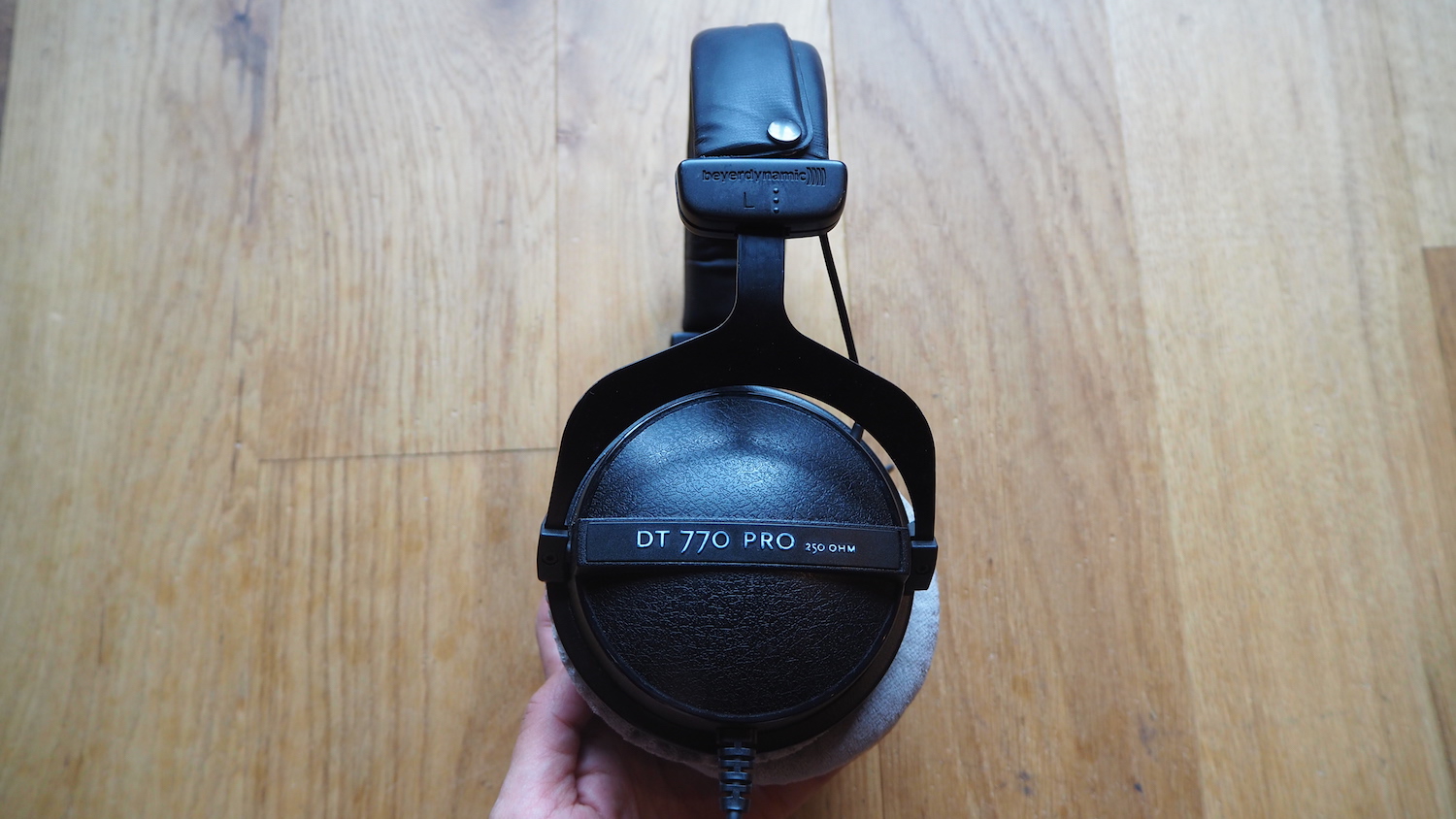

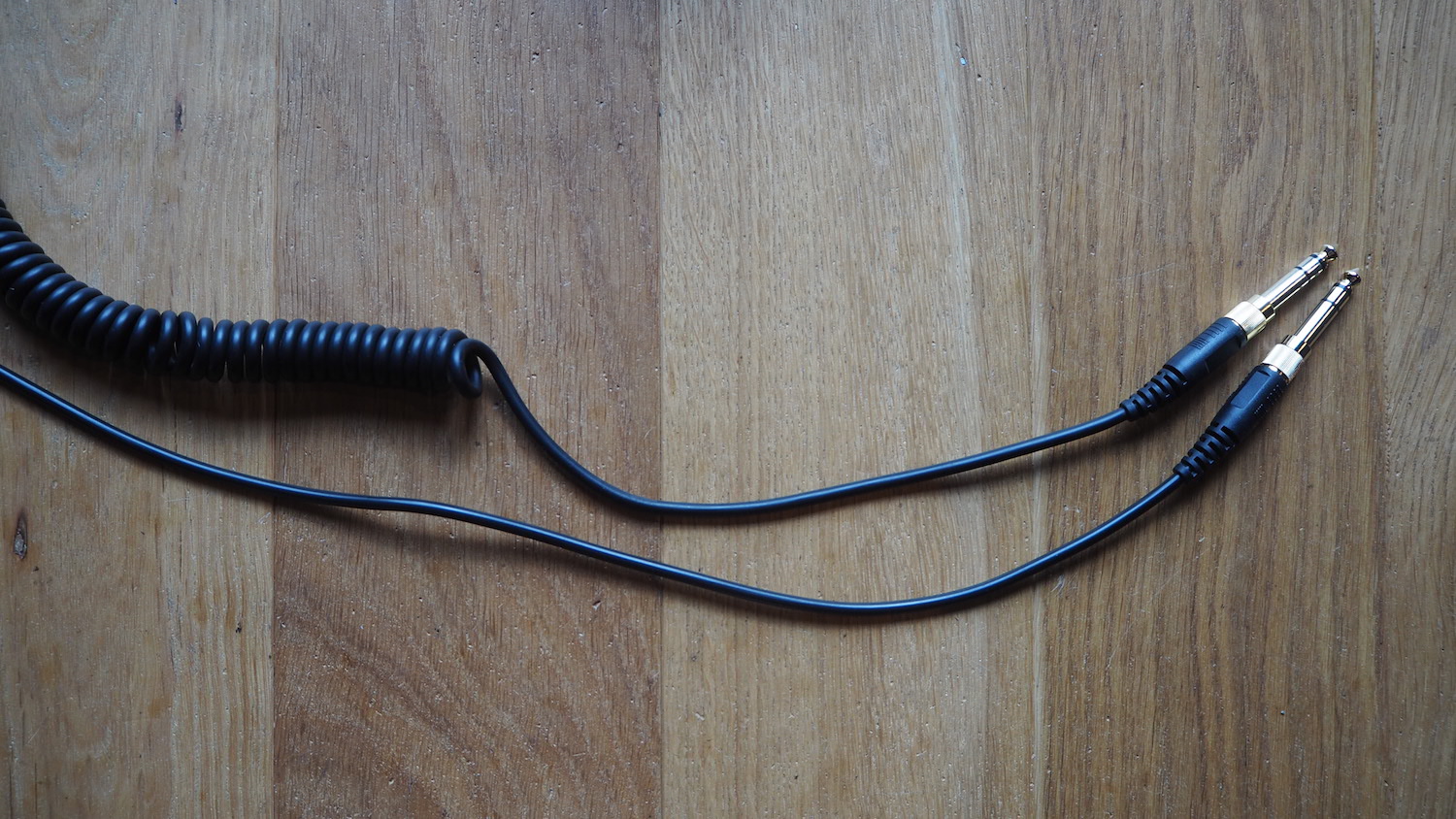
At Bax-shop (a Dutch retailer), the DT 770 250 Ohm are selling for €116, DT 990 Edition for €159 (and DT 990 Pro 250 Ohm €122).
At Thomann (a German retailer who sells worldwide), the DT 770 250 Ohm are selling for €122, DT 990 Edition for €159 (and DT 990 Pro 250 Ohm €122).
Buy the DT 770 Pro 250 Ohm: https://redir.love/vUOBW8oN
Buy the DT 990 Edition 250 Ohm: https://redir.love/qM1im3YD (not available anymore on Thomann but take a look at other products)
If price isn’t an issue and you’re currently comparing some other brands, for open-back, I can recommend Sennheiser HD650 (open) which are €354, more than twice the price of the DT 990 Edition, and are also very honest sounding and pleasurable to work with. For me, the DT 990 had a slightly more detailed sound and better spatial accuracy, which was more important to me than the frequency spectrum. (Sonarworks has a deal for €699 where you can buy the full software for headphones and speakers + the Sennheiser HD650. They also have a student/academic/educational discount so it is worth checking out). Some people might recommend headphones by AKG, but I’ve tried headphones from AKG and I don’t like the way they feel on my head. They feel less rugged and make a lot of noise when moving around on your ears.
Let me know in the comments if you have any other tips, or feedback on the above!
Click here to see the Beyerdynamic headphone range
—
If you’ve reached this far down of my blog post, please take a few seconds to:
Subscribe to my YouTube
Follow my Instagram
Like my Facebook








